CRICKET RENOVATIONS
Plan and prepare early
by TurfPro Editor, Laurence Gale MSC, MBPR
My key message is to undertake an effective renovation programme at the end of the playing season to repair ends, restore levels and introduce some new grass seed into the square.
Having just returned from my summer vacation, I am mindful that the cricket playing season is coming to a close with many groundsmen turning their attentions to their end of season renovations. These start for some schools groundsmen in August, whereas most grassroots cricket clubs do not start their renovations until late September, early October.
It is important you prepare and plan your renovations early enough to ensure you are not left short of materials or a contractor cannot fit you in, during this busy time of the year.
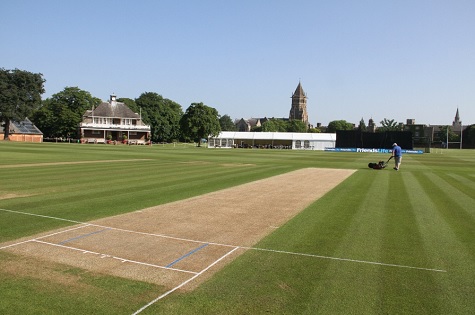
My key message is to undertake an effective renovation programme at the end of the playing season to repair ends, restore levels and introduce some new grass seed into the square.
As most top professionals would say, skimp at your own peril, because if you do not carry out the appropriate level of work on your square it can lead to the production of inferior pitches the following season.
Again, the effectiveness of these renovations will be determined by the knowledge and resources available and no doubt governed by the current weather conditions to some degree. Aeration work may be a problem while the grounds remains dry and hard.
Also, if these conditions persist, you will need to keep any newly sown squares watered.
Renovating a square is hard work, often made harder if you do not have the appropriate machinery and personnel to undertake the work. There are some very good local contractors who are professionally geared up to undertake this work. It might be worthwhile obtaining a quote?
A visual examination of the surface is simply not good enough. Taking a number of core samples allows you to see the amount of thatch, root density and integrity of the soil, in terms of having any root breaks or changes of soil physical properties. Ideally you should be taking core samples to a depth between 100mm-150mm.
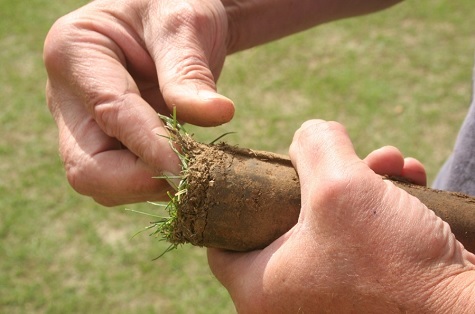
Also, the benefit of taking soil samples is you can send them off for a soil particle size analysis and nutrient status, thus giving you more information about your square.
It is important to order any materials in advance of the renovations. Seed and loam supplies can be delayed, get your order in early.
There are some very basic aims when renovating a cricket square and these hold true no matter where the square, the standard of cricket played on it or the resources available.
The first job is to clean off as much vegetation as possible and remove any unwanted organic matter / thatch by the process of mowing, scratching, scarifying and sweeping the surface prior to topdressing.
You really need to remove as much dead matter and thatch out of your square as possible, scarifying in several directions. Too often I see clubs not cleaning enough material off.
Then re-instate damaged areas (bowlers ends and batting creases) and restore levels with appropriate amounts of compatible loam material and then overseed with a desirable dwarf ryegrass seed mixture.
Thatch is a tightly intermingled layer of living and dead stems, leaves and roots, which accumulates between the layer of actively growing grass and the soil underneath. Thatch accumulates when the production of dead organic matter exceeds the rate at which it decomposes or when topdressing over excessive levels of thatch leads to buried thatch and fibrous profile that will inevitably lead to low and slow pitches.
All clubs will have their own methods of working and renovating their squares. The first task is to mow the square as low has you can get with your wicket mower, then use a combi rake to scratch up any remaining prone grass growth and then re-mow the square or use a brush / vac to clean up the surface.
The next task is to scarify the square. Scarifying is a process perhaps best described as a mechanical raking and is usually only carried out during end of season renovations or once a wicket is finished with for the year. Although its primary purpose is to remove thatch, it has associated benefits as well (linear aeration). A scarifier uses a series of sharp blades that rotate at high speed and cut into the turf in a vertical manner. Always scarify to a depth suitable to your square - i.e. to below the depth of thatch.
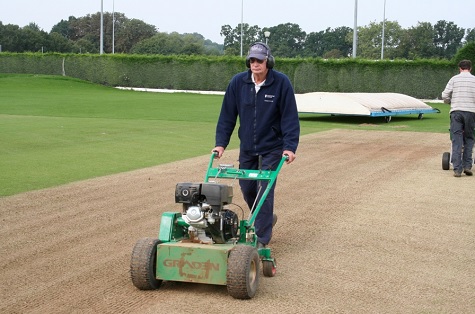
Scarification is important to remove unwanted vegetation, but also to produce a key for the new loam material and seed to sit in. The level of scarification required will be dependent on how much of a thatch layer you have generated throughout the season. scarifying in at least three directions, finishing in the line of play. Never scarify at right angles to the last pass as this can pull blocks up and severely disrupt the surface.
Where necessary, clean off all the thatch debris after each pass. The square can then be oversown using a suitable grass seed mixture; do not be frightened to try out new cultivars. Sowing rates now range between 35-50 grammes per square metre. In essence you are aiming to establish new grasses into your square.
In recent years we have seen a better choice of machinery to undertake this work in the form of dedicated tractor mounted / pedestrian scarifiers - ones such as the Sisis TM 1000 and HD 600, the powerful Graden scarifiers and Koro Frasie mowers.
The final task is to apply some new compatible loam material to repair your ends and restore general levels. It is important to stick with the same type loam material, never a good idea to mix your loams, as they have different shrink and swelling characteristics.
There are a number of specialist loam suppliers that can supply specific clay content loam soils, you need to ensure the material is compatible to your existing loam soil material.
Your loam can be applied in various ways, some groundsmen still apply and spread by hand, most clubs will use a drop / cyclone type of spreader. As a guide, most club groundsmen tend to use between 6-10 22kg bags per pitch, the key is not to smother the turf and spread it on evenly.
Once you have topdressed the square, it then a case of using a trulute / straight edge / brush to work in the loam material into the surface and cover the seed.
Ensure a good seed pattern during renovations. The best method is to use a dimple seeder and make many passes but, if this is not possible, use scarifier grooves, even applying seed in between scarifier passes whilst the slits are open, since only a small proportion of the seed will be picked up in subsequent passes. The seed must be in good contact with the soil or it will not grow.
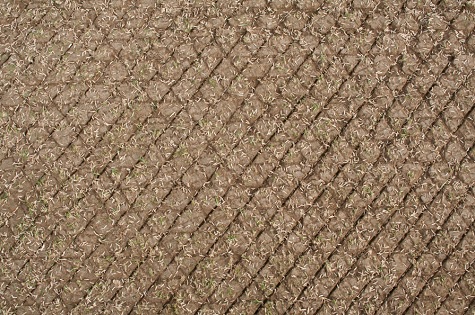
Aim to complete all renovations by the end of October at the absolute latest, preferably sooner. Ryegrass needs a soil temperature of above 5.5° C in order to germinate. With favourable temperatures, the seed should germinate between 7 and 14 days. Water the seed if necessary and keep moist until the grass plants have established.
A pre-seeding fertiliser can be used to help promote some growth, something like an 8:12:8 or even a 7:7:7 at 35g/m2 will be ideal, though you should be careful not to use anything with iron in at this stage as it can acidify the surface and damage the new grassplants. It will then be a case of allowing it to grow to a height of around 40mm before giving its first cut using a rotary mower.
Regular mowing when the grass is growing will maintain the sward health. Certainly, do not allow the sward to grow above 25mm when established or else there will be a loss in density.
Feed through the winter months too! Grass needs much less nitrogen through the winter months, but that does not mean that it needs none. Applying a low nitrogen feed, which is high in potassium, will help the grass plant recover from damage and stress and keep red thread at bay.
One of the last beneficial jobs, is to carry out some aeration work, usually done in October / November when soil conditions allow. In recent years we have seen a move to some deeper aeration techniques pioneered by Bretton King from Ecosol with his deep drilling machine and Keith Exton who developed the use of a Weidemann fast tinning machine, both able to aerate to depths of 200mm with 8-10mm diameter tines. Most clubs, however, use a pedestrian solid tine aerator spiking down to a depth of 100mm.
 |
|
 |  |
MICK HUNT AWARDED LIFE MEMBERSHIP OF MCC
Presentation during Test at Lord's on Saturday
by Chris Biddle, Turf Pro Consultant Ediitor
In front of a standing ovation by the members and a capacity crowd, Mick Hunt was awarded Honorary Life Membership of the MCC on Saturday (11 August) just before the start of play of the Second Test Match.
In front of a standing ovation by the members and a capacity crowd, Mick Hunt was awarded Honorary Life Membership of the MCC on Saturday (11 August) just before the start of play of the Second Test Match between England and India.
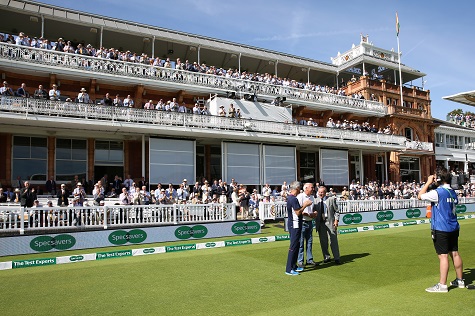
Standing ovation for Mick from the Members
The presentation was made by Lord MacLaurin, President of the MCC who was accompanied by Phil Neale, operations manager of the England cricket team. Mick was also later presented with a signed bat by Joe Root, England cricket captain.
It has recently been announced that Mick is to stand down as head groundsman at Lord's after a career lasting 49 years. He joined the grounds staff in 1969, and was appointed head groundsman in 1985.
It was perhaps appropriate, if not inevitable, that his last Test Match at Lord's would provide Mick and his staff with some of the most challenging conditions in recent years, coming hard on the heels of one of the hottest and driest summers.
The match had been hyped up and highly anticipated since the pulsating First Test at Edgbaston ended in a narrow England victory. A series against India ranks as high as an Ashes series – and was a sell-out.
The first day (Thursday 9 August) was a complete wash-out, the first for 17 years. Consistent heavy drizzle and low cloud forced the umpires to call off the game at 5.00pm.
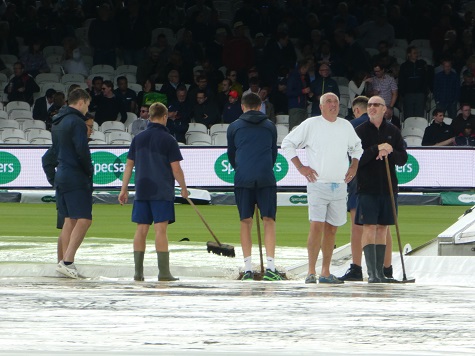
Friday started brightly, but after half-an-hour play (and two wickets for England), a shower suspended play which resumed for another short period before setting in heavily during early afternoon. Ground staff were scuttling backwards and forwards, and there were a few false indications that play might commence, but at 4.00pm a deluge drowned Lord's. For a while, ground staff were prohibited from the playing area because of lightning in the vicinity.
The outfield took a real soaking as evidenced by the water coming off the Blotters. But as soon the rain cleared, Mick and his grounds staff worked their socks off in front a mainly patient but sometimes vocal crowd.

Just after 5.00pm, the ground was decreed fit for play. It was an astonishing feat, aided by the installation of the new outfield put down in 2003 and the frantic efforts of the ground staff.
A few years ago, play wouldn't have been contemplated for perhaps another 24 hours. As it was, a near capacity crowd, who had backed their hunches (and their faith in the Lord's grounds staff) were treated to two hours of exhilarating cricket as England, spearheaded by Jimmy Anderson, bowled out India just before 7.30pm.
If any day of cricket had shown off the skills and dedication of the ground staff - it was last Friday at Lord's.
Perhaps it was also fitting that Mick had that opportunity to showcase his dedication to the game before a capacity audience and in his last Test Match.
Thanks to Clare Skinner, MCC, for photos of Mick Hunt and the presentation
 |  |
AMENITY FORUM ISSUES STATEMENT ON USE OF GLYPHOSATE
Following recent judgement in USA
Following on from jurors in San Francisco awarding a former school groundsman $289m, ruling that Monsanto's Roundup gave him terminal cancer, the Amenity Forum have issued a statement on Glyphosate useage.
Following on from jurors in San Francisco awarding a former school groundsman $289m, ruling that Monsanto's Roundup gave him terminal cancer, the Amenity Forum have issued a statement on Glyphosate useage.
The statement read, "Managing weeds in amenity situations is a vital task - it impacts on every UK citizen every day providing safe and healthy environments. It really keeps Britain moving. As we move forward in this continually changing world, the need for decisions to be based upon proper evidence and science has never been so important. Chemicals used for amenity management are more rigorously tested than many household products. Not only are amenity chemicals thoroughly tested and approved but they are continually monitored.
"In the case of the active glyphosate, it has only recently undergone a thorough review in Europe and been re-approved for use in amenity situations as a safe chemical. This review, conducted by the Expert committee of scientists in Europe and approved by vote of member states, took into account some concerns expressed about the active possibly having carcinogenic effects. Based on all the science and evidence available, it was concluded that these were unfounded and it was safe to use.
"In that context, the Forum is very surprised to hear the outcome of the recent judgement in the USA relating to glyphosate in the product Round Up. We understand that an appeal is to be made by the manufacturer and so it is inappropriate to comment further on this.
"The Forum seeks to work with everyone across the important sector of amenity promoting best practice in all aspects of weed management, chemical and non chemical. We support an integrated approach making best use of all tools available to ensure a safe and healthy environment fit for purpose whether it be streets and pavements, parks, railways, sports grounds and indeed all amenity spaces. Glyphosate has proved to be a very important and essential element in such management programmes as an approved, regulated and fully authorised chemical."
 |  |
LONDON TO GET TWO NEW GOLF COURSES
Plus improvements to a prominent existing course
A partnership has been announced between USA golf architects the Dye family and UK golf course developers the Menai-Davis family of north London.
Golfers in the south east of England will soon get two new 18-hole courses to play on, plus improvements to one of London’s most prominent existing golf courses, in a partnership announced last week between USA golf architects the Dye family and UK golf course developers the Menai-Davis family of north London.
The Dye family of golf course architects is renowned for courses familiar to millions of TV viewers such as the Stadium Course at TPC Sawgrass in Florida, the Ocean Course at Kiawah Island in South Carolina and Whistling Straits in Wisconsin, which is the venue for The Ryder Cup in 2020.
In Northolt, north-west London, the West London Links will open in the summer of 2020 to offer golfers a modern vision of links golf not far from Wembley Stadium.
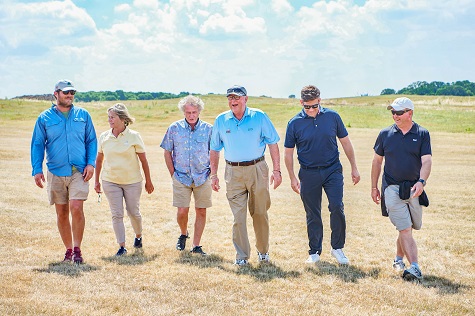
L-R: Matt McGarey, Cynthia Dye, Tony Menai-Davis, Perry Dye, Ceri Menai-Davis and Nigel Ely during a course inspection at West London Links in summer 2018. Photo by Robert Parfitt
Dye family member Matt McGarey is teaming up with golf course construction expert Nigel Ely, former Chairman of the British Association of Golf Course Constructors, to shape its greens, bunkers and undulating fairways.
Ceri Menai-Davis, director of The Shire London, West London Links, West London Golf Centre and The Dye London, said: “West London Links is a bold, brave design. We are pushing the boundaries of what is possible as regards sculpting a golfing landscape, with dramatic shaping which UK golfers have not seen before at an inland links.
“The Dye family and Nigel Ely are bringing a huge amount of collective experience of links courses around the world, and will be applying everything they have learnt to West London Links.
“Expect surprises! Golfers will encounter imaginative new green shapes, surrounds and run-offs, and a variety of authentic links golf hazards including pot bunkers and steep revetted faces. We will have fast-running fairways, slick greens, multiple tee positions and classic links-style blind shots, plus extensive short game and practice areas. It will be a championship-length golf course to test elite golfers from the back tees, but it is also designed to be accessible even to beginner golfers.”
The second new golf course is located near Edgware in north London, where construction starts next month on The Dye London, a Tour-style golf course scheduled to open in 2023.
It will be the first UK golf course designed from scratch by Dye Designs, whose architects Perry Dye and Cynthia Dye McGarey will be teaming up on the project. Perry and Cynthia have earnt individual worldwide acclaim for their designs including Dreamland in Azerbaijan, Trump National in the USA, San Roque’s New Course in Spain, Mission Hills Country Club in China, and the magnificent West Cliffs in Portugal, a new course which opened in 2017 and is already ranked inside continental Europe’s Top 30 golf courses.
Dye Designs founders Pete and Alice Dye were also involved in the initial plans for The Dye London in 2011 after meeting Tony Menai-Davis at the genesis of the project.
Pete Dye, venerated throughout the sport, is the only living golf course architect in the World Golf Hall of Fame.
To further deepen the partnership, the Dye family are also consulting on further course developments at The Shire London, a Seve Ballesteros design which opened in summer 2007 to great acclaim.
Matt McGarey is consulting with the team at The Shire London on the development of a comprehensive new short game area there, plus the reshaping and reconditioning of several key bunkers on the 7,028 yard par 72 Ballesteros Masters Course. The Shire London’s 13th hole is also being remodelled during the work.
“These two brand-new golf courses will offer player-friendly family golf for all lovers of the sport, and of course we are also delighted to be consulting at The Shire London, which is already well-known for its modern, inclusive nature” said Perry Dye. “This sport needs more people like the Menai-Davis family, who are among a very small number of people creating original, accessible golf courses in the UK at the moment. We are looking forward to getting started at The Dye London in September, and of course work on the West London Links and at The Shire London is already well underway.”
“Speaking as someone who, in the late eighties, was barred from joining a golf club because my face didn’t fit, I have been fortunate to have worked subsequently with the world’s best golfer, Seve Ballesteros, and with the world’s best golf architects, the Dye family,” said Tony Menai-Davis, managing director of The Shire London, West London Links, West London Golf Centre and The Dye London.
“It was a privilege to introduce my sons and fellow directors Ceri and Cae to Pete and his wife Alice Dye at their home in Florida earlier this year, and we are thrilled to be teaming up with the Dye family in bringing these brand-new golf courses to life. It is also special to have their expertise now involved at The Shire London as we enter our second decade there.
“Both of our new courses will echo the sort of golfing tests which Tour superstars face in Major championships,” he said, “but thanks to multiple tees golfers of all levels and all ages will be able to enjoy them. We have some real treats and surprises in store for London’s golfers, and hopefully our new golf courses will also attract visitors from much further afield, like The Shire London has been doing since we opened it in 2007.”
“It is certainly an exciting time to be a golfer in London” he said.
Further announcements will be made about the West London Links over the coming year, as the Dye and Menai-Davis teams put the finishing touches to the new golf course.
 |  |
BIGGA OFFER SOME DETAILS ON BTME '19 CHANGES
New layout and features
With a little over five months to go until BTME which takes place in January 2019, BIGGA has released details of innovations to the exhibition, including Golf Course Construction Live.
The British & International Golf Greenkeepers Association (BIGGA) has revealed some changes to their annual BTME event.
Prior to BTME 2018, BIGGA announced a set of changes and developments to the annual exhibition for 2019 and beyond, including expanding the size of the exhibition by up to 25%. In a statement the Association said the new layout "contains more opportunities than ever for visitors to interact with exhibitors, gain knowledge and support and experience an enhanced Continue to Learn education programme."

With a little over five months to go until BTME, to be held in January 2019, BIGGA has now released details of developments to the exhibition, including Golf Course Construction Live, in which various aspects of golf course construction will take place before the visitor’s eyes.
There will also be an area of the exhibition dedicated to new products, a golf simulator hosted by Perennial and Rigby Taylor and a theatre on the show floor where short seminars will take place.
As in previous years, Continue to Learn will kick off the week, from Sunday 20 January 2019 - which will be expanded with an all-new Deputy’s Conference intended for those looking to make the step up to management of a course.
The new Links Forum will have education tailored specifically for those working on or wishing to learn more about links courses, while the Ecology & Environment Forum will focus upon sustainability and the environment.
BIGGA Head of Member Development Sami Strutt said, “I’m very excited to reveal the Continue to Learn at BTME 2019 education programme. There will be more than 70 speakers and 80 education offerings, so there should be something for everyone.”
BTME itself will run from Tuesday 22 to Thursday 24 January 2019. The Association said, "Exhibitors have embraced the changes that the association has made to the exhibition’s layout." A total of 140 exhibitors attended BTME 2018 and BIGGA say they are on course to substantially exceed that number.
Campey Turf Care Systems for example has more than doubled the size of its stand, booking 200m2.
Richard Campey said: “BTME has always been a major event in the Campey calendar, attracting our overseas as well as UK dealers. We anticipate BTME 2019 being our most successful yet.”
So far, returning exhibitors have purchased an average of 10.5% extra space compared to BTME 2018.
BIGGA Chief Executive Officer Jim Croxton said, “The support we have received from our partners and exhibitors has vindicated the decision we made to restructure the BTME experience. Our exhibitors were eager to expand and really showcase their wares and I’m delighted we have been able to offer this opportunity and that they have supported our decision so emphatically.
“Over the coming months we’re looking forward to unveiling even more industry-leading innovations to ensure BTME 2019 is not only our best event ever, but also one of the best events the turf management industry has ever seen.”
 |  |
DIGITAL DOWNLOAD FOR FUNGICIDE CALENDAR
Syngenta launch new service
Syngenta has launched a digital download of its Proactive Fungicide Calendar to enable a bespoke fungicide programme for courses to be planned.
Syngenta has launched a digital download of its Proactive Fungicide Calendar, to enable superintendents, course managers and agronomists to plan a bespoke fungicide programme for their course - and to stay ahead of disease damage to turf.
Using the digital download PowerPoint version of the poster, greenkeepers can identify periods of high risk on their course, and pre-empt expected disease outbreaks with an appropriate fungicide and Integrated Turf Management programme.
Furthermore, by incorporating any Maintenance and Key Events, the programme can be tailored to minimise risk and present turf at the best possible quality.
The PowerPoint includes a series of information buttons where users complete the details and then drag and drop onto the calendar, along with the required product solutions.
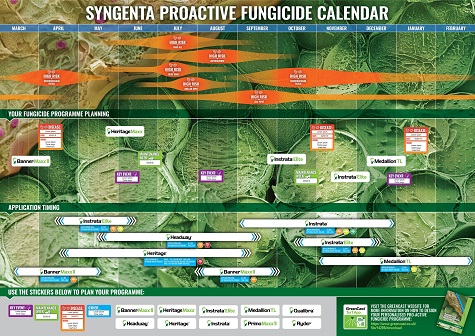
Syngenta Proactive Fungicide Calendar
“The beauty is that it can be tailored for every individual course and their specific situation,” says Syngenta Turf business manager, Daniel Lightfoot. “And they can update, move and adapt the programme as the season progresses, according to changes in risks and challenges.”
Last year Syngenta introduced a wall mounted poster version of the Proactive Fungicide Calendar.
“The digital version is really easy to use and gives an instant visual picture of what may be needed to protect your turf,” said Daniel.
He highlighted that it's also been made better by adding other elements of the turf management programme, such as Primo Maxx II, Qualibra and Ryder, so users can build up a comprehensive programme that meets needs for the coming season.
“Also, if you use it as a record of what happened and what you did, you can save that as a base for next year's programme. Over time, you'll build a picture of a precise programme that works best for your course,” he added.
With the digital version the plan can be shared among the course management team and with agronomists and advisors, pointed out Daniel.
The digital version of the poster can be downloaded from the GreenCast website, along with a copy of the accompanying guidelines: Planning Your Proactive Fungicide Programme.
 |  |
STIHL LAUNCH NEW GENERATION OF BATTERIES
Higher capacity and new look
Designed as a direct replacement of the current versions, company says the new AP 100 and AP 200 allow for up to 25% more run time when used in conjunction with their PRO Cordless tools.
STIHL has launched a new generation of PRO 36V batteries that offer higher battery capacity and also feature a new look orange front design for increased visibility.
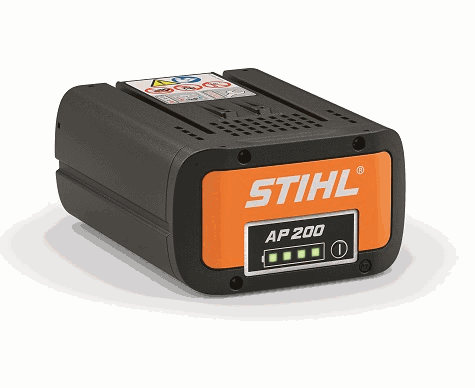
Designed as a direct replacement of the current versions, the company says the new AP 100 and AP 200 allow for up to 25% more run time when used in conjunction with their PRO Cordless tools.
Both the new batteries remain the same weight as the current versions (AP 100 0.8kg and AP 200 1.2kg).
The AP 300 will remain at the same capacity and weight, but will feature the new design. Enhanced STIHL AP 300 batteries are expected in 2019.
As per STIHL’s existing battery range, the company says the new generation of AP batteries can be used in the rain due to its integrated humidity cell protection and has charging level indication with four green LEDs.
PITCHWORKS EXPANDS WITH NEW APPOINTMENT
Area manager role
Pitchworks has announced the appointment of Lee Williams as its new area manager covering North Wales, Shropshire, Merseyside, Cheshire and surrounding areas.
Pitchworks has announced the appointment of Lee Williams as its new area manager covering North Wales, Shropshire, Merseyside, Cheshire and surrounding areas.

L-R: Lee Williams with Garry Worrall
Founded in 1993 by former Manchester United FC player Garry Worrall, Pitchworks say they have significantly grown in size and reputation over recent years.
The company prides itself on its commitment to developing close customer relationships which they say are created through its dedicated sales representatives who provide in-depth, one-to-one consultations.
Lee’s previous roles have included being the head groundsman at Rydal Penrhos School - a position which he held for 30 years. With experience in the polo industry as well, Lee is also a keen golfer and has represented the County of Flintshire.
Lee can be contacted at lee@pitchworks.co.uk
ANDY MOWS DOWN WORLD RECORD
Fastest time from John O’Groats to Land’s End
Prison officer Andy Maxfield’s amazing journey on an unmodified lawn tractor has been officially recognised as a GUINNESS WORLD RECORDS® achievement.
Prison officer Andy Maxfield’s amazing journey from John O’Groats to Land’s End on an unmodified lawn tractor has been officially recognised as a GUINNESS WORLD RECORDS® achievement.

Andy Maxfield with his GUINNESS WORLD RECORDS certificate for the fastest journey from John O’Groats to Land’s End on a lawn mower, achieved on 30 July 2017
The story of Andy’s epic journey is featured in a new display at the Land’s End Visitor Centre in Cornwall, and also at the British Lawnmower Museum in Southport.
The 874-mile record attempt in July 2017 took Andy 5 days, 8 hours and 36 minutes, making it the fastest time for the journey on a ride-on lawnmower. Andy embarked on the challenge to raise funds and awareness for Alzheimer’s Society after his father was diagnosed with the disease.
Andy’s initial goal was to raise a modest £1000 for Alzheimer’s Society through the lawnmower challenge in July last year, followed by a charity ball in December. “So far we’ve collected over £9000 and now I’m trying to reach our new target of £10,000 by the end of 2018,” said Andy. “We’re keeping the JustGiving page www.justgiving.com/andrew-maxfield open until then. Donations can also be made by texting MAXF80 £3 to 70070.
“I’m very proud my record attempt was successful but I couldn’t have done it without the encouragement of my family and support team, and having a great lawn tractor certainly helped.”
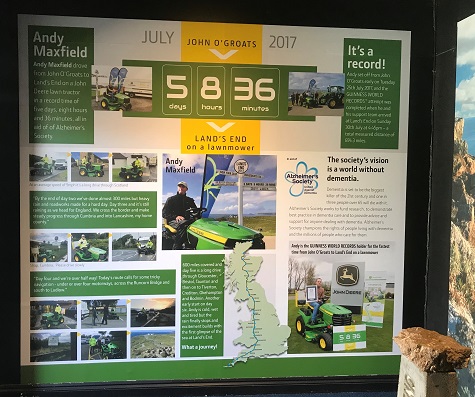
Andy Maxfield’s story on display at the Land’s End Visitor Centre in Cornwall
To supply proof for the GUINNESS WORLD RECORDS attempt, the lawnmower was fitted with a tracking system routinely used by much larger agricultural machinery for guidance and monitoring. John Deere’s Operations Centre was able to track Andy’s entire journey via JDLink software. The resulting data was the proof needed to verify Andy’s route and travelling time as a GUINNESS WORLD RECORDS success.
Sadly, Andy’s father, the inspiration behind the John O’Groats to Land’s End challenge, lost his own battle with dementia in January 2018, unaware that his son’s magnificent achievement was indeed a record.
Alzheimer’s Society is available for anyone affected by dementia and there are lots of ways the charity can help – for details call the National Dementia Helpline on 0300 222 1122 or visit www.alzheimers.org.uk.
 |
|
 |  |
ADVERTISE YOUR JOBS HERE
Amazing success rates!
Advertise your recruitment needs on TurfPro Weekly Briefing and reach our targeted audience of recipients every week.
Contact Susan Pallett for details - 01491 837117
|
SHOWCASE YOUR NEW PRODUCTS HERE
Have your new equipment seen first!
Use this Weekly Briefing to showcase your new products to our ever-growing community of specialist dealers.
Contact Susan Pallett - 01491 837117
|
|
|